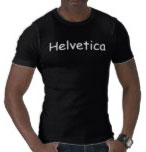With the Tetris lawsuit of the way, the action has moved to EA’s lawsuit against Zynga for copying the Sims in Zynga’s The Ville.
Like the Tetris case, it comes down partly to the idea-expression dichotomy. (Better explained here.) You cannot protect the core idea of the game (semi-controlling little people), but you can protect the details of how it is expressed: protection is afforded to the combination of character looks, menus, etc… all the small design decisions that express this idea.
Xio Interactive lost to the Tetris company because a sufficient number of small design decisions such as size of the playfield and color changes were similar to the original Tetris. The judge said:
“I find the following elements are also protected expression and further support a finding of infringement: the dimensions of the playing field, the display of “garbage” lines, the appearance of “ghost” or shadow pieces, the display of the next piece to fall, the change in color of the pieces when they lock with the accumulated pieces, and the appearance of squares automatically filling in the game board when the game is over. None of these elements are part of the idea (or the rules or the functionality) of Tetris, but rather are means of expressing those ideas.”
I am sympathetic to the principle that you cannot copyright a game idea.
On the other hand, this creates a counter-intuitive reversal in which the core innovative idea of a game is unprotectable, and only the trivial design decisions that follow are afforded protection. I think this makes some sense, but isn’t there something strange about it too?
In practice you see something similar in patents, such as in the Apple-Samsung case, where each patent is just a list of obvious or near-obvious concepts combined, with some vague specifics added (a database! a heuristic! a mobile device!), but where it’s the staggeringly banal specifics that actually make it patentable. Patents and copyright are obviously not the same thing, but there are some parallels here. Or this Google patent for face unlocking of devices, which has already been done a million times, except now it’s on a mobile device, with user switching!
Patent law is clearly broken, but I am not sure I would change copyright law.
It’s just that our intuition of what constitutes the “core of a game” puts emphasis on what we could call “the idea”, whereas copyright puts emphasis on what seems to be the shallow surface.

 Get the T-shirt
Get the T-shirt The iPhone 5 case
The iPhone 5 case The cosmetic bag
The cosmetic bag

![file_damaged[1]](http://www.jesperjuul.net/ludologist/wp-content/uploads/2012/09/file_damaged1-450x246.png)
![olympics_20120801072335_640_480[1]](http://www.jesperjuul.net/ludologist/wp-content/uploads/2012/08/olympics_20120801072335_640_4801-150x150.jpg)